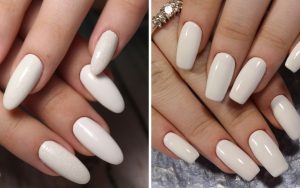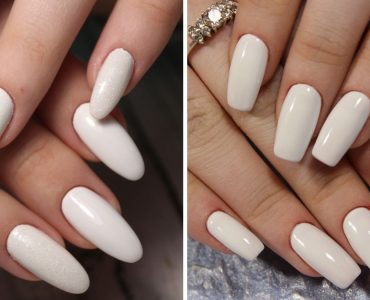Having beautifully manicured nails is a goal for many people, but one common frustration is dealing with broken nails. While nail breakage can occur for various reasons, the shape of your nails can play a significant role in their susceptibility to breaking.
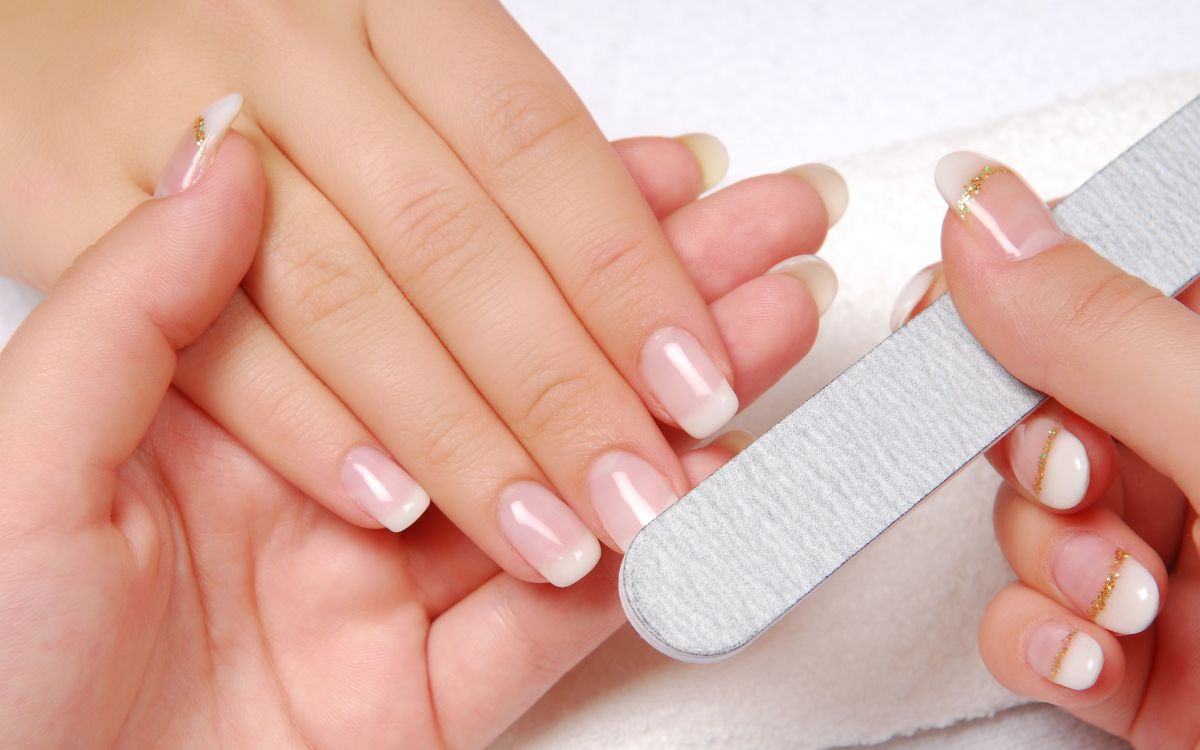
Understanding which nail shapes are more prone to breakage can help you make informed decisions about your manicure choices and adopt preventive measures to maintain stronger, healthier nails.
In this blog post, we will delve into the topic of nail shapes and their tendency to break. We will explore six popular nail shapes, including square, oval, round, almond, coffin and stiletto nails, and discuss their strengths and vulnerabilities.
Square Nails
Square nails are characterized by their straight, flat tips that align with the sides of the nail bed. This shape creates a clean, symmetrical look that is favored by many individuals. When it comes to nail strength and durability, square nails have a notable advantage.
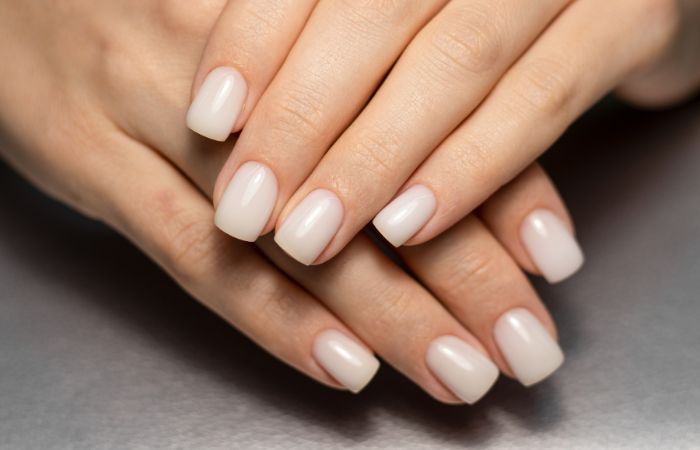
Characteristics of Square Nails
Square nails have a distinct shape that is easily recognizable. The tips of square nails form a sharp 90-degree angle, creating a flat surface across the nail bed. This shape provides a wide nail base, making it less likely for the nails to break or chip.
Durability of Square Nails
Due to their squared-off shape, square nails are less prone to breakage compared to other nail shapes. The straight edges distribute the pressure evenly across the nails, reducing the likelihood of cracks or fractures. This durability makes square nails a suitable choice for those with weak or brittle nails.
Benefits of Square Nails
Square nails offer several advantages beyond their strength. They provide a clean and classic appearance that suits various styles and occasions. Square nails also offer a generous canvas for nail art, allowing for intricate designs and patterns to be easily showcased.
Maintenance Tips for Square Nails
To keep square nails strong and prevent breakage, it’s essential to follow proper maintenance practices. Here are some tips to consider:
- Keep nails at a moderate length: While longer square nails can still be durable, it’s generally recommended to maintain a moderate length that is practical for daily activities.
- File the corners: Square nails can develop sharp corners over time, which may increase the risk of breakage. Regularly file the corners to ensure they are smooth and rounded.
- Moisturize regularly: Well-hydrated nails are less likely to become dry and brittle. Apply a moisturizing nail oil or lotion to keep the nails and cuticles nourished.
- Protect with a top coat: Apply a protective layer of clear top coat to seal and strengthen square nails. This can help prevent chips and cracks, enhancing the overall durability.
Oval Nails
Oval nails are known for their rounded shape that resembles the curve of an almond. This elegant and feminine nail shape offers not only aesthetic appeal but also strength and resilience. Let’s explore the characteristics and benefits of oval nails, along with some tips for shaping and maintaining them.
Read This Next:
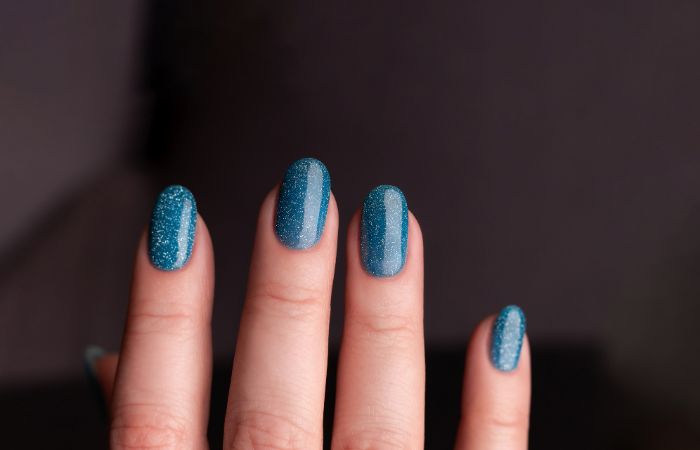
Characteristics of Oval Nails
Oval nails feature softly rounded edges that taper towards the fingertip. This shape mimics the natural curvature of the nail bed, creating a graceful and balanced look. Oval nails are versatile, complementing various hand shapes and lengths.
Strength and Durability of Oval Nails
Compared to some other nail shapes, oval nails are generally considered to be stronger and less prone to breakage. The rounded edges distribute pressure more evenly across the nails, reducing the risk of cracks or splits. This makes oval nails a suitable choice for individuals who desire both durability and an elegant appearance.
Benefits of Oval Nails
Oval nails offer several advantages beyond their strength. Their elongated shape can make the fingers appear longer and more slender. They also provide ample space for nail art and designs, allowing for creative expression. Additionally, oval nails are considered more low-maintenance compared to shapes with sharp corners or points.
Shaping and Maintenance Tips for Oval Nails
To achieve and maintain oval nails, consider the following tips:
- Start with the right length: Begin by trimming your nails to a moderate length that is comfortable for you. This will serve as the foundation for shaping oval nails.
- File with care: Use a fine-grit nail file to shape the edges of your nails. Gently round out the corners, ensuring a smooth and even curve. Work in one direction to avoid weakening the nails.
- Regular maintenance: Regularly trim and file your oval nails to maintain their shape and prevent them from becoming too long or susceptible to breakage.
- Moisturize and protect: Apply a nourishing cuticle oil or cream to keep the nails and surrounding skin hydrated. This helps to maintain the overall health and strength of your oval nails.
Round Nails
Round nails, as the name suggests, have a gentle curve along the edges, mimicking the shape of the fingertip. This classic and natural nail shape is popular for its simplicity and versatility. While round nails offer their own charm, it’s important to note that they may be more prone to breakage compared to other nail shapes. Let’s explore the characteristics of round nails, the factors that contribute to their vulnerability, and strategies to strengthen and prevent breakage.

Characteristics of Round Nails
Round nails feature curved edges that blend seamlessly with the shape of the fingertip. This soft and natural shape is often favored for its simplicity and understated elegance. Round nails are suitable for individuals who prefer a more low-maintenance look.
Vulnerability to Breakage
Round nails, although aesthetically pleasing, tend to be more susceptible to breakage. The lack of straight edges means that the force applied to the nail is concentrated at the tip, increasing the risk of cracks or splits. Factors such as nail length, thickness, and individual nail health can also influence their vulnerability.
Factors Contributing to Breakage
Several factors contribute to the potential for round nails to break easily:
- Length: Longer round nails are more prone to bending or catching on objects, increasing the risk of breakage.
- Nail Thickness: Thinner nails, particularly in the center, are more likely to bend or flex, making them more susceptible to breakage.
- Nail Health: Weak or brittle nails, whether due to genetics, environmental factors, or improper care, are more likely to break regardless of their shape.
- Lifestyle and Activities: Certain activities or professions that involve frequent hand use or exposure to water and chemicals can weaken the nails, making them more prone to breakage.
Strategies to Strengthen and Prevent Breakage
To strengthen round nails and minimize the risk of breakage, consider the following strategies:
Read This Next:
- Optimal Length: Keep round nails at a moderate length that is practical for your lifestyle and activities to minimize the risk of bending or catching.
- Nail Hardener: Consider using a nail hardener or strengthening treatment to fortify the nails and enhance their resilience.
- Protective Measures: Wear gloves when engaging in activities that may expose the nails to harsh chemicals, water, or excessive pressure.
- Balanced Diet and Hydration: Maintain a balanced diet rich in essential nutrients and drink plenty of water to support overall nail health.
- Regular Maintenance: Trim and file round nails regularly to maintain their shape and prevent them from becoming too long or prone to breakage.
- Gentle Care: Be mindful of how you handle objects and avoid using your nails as tools to reduce the risk of accidental breakage.
Almond Nails
Almond nails get their name from their unique tapered shape that resembles the smooth curves of an almond. This elegant and feminine nail shape is often associated with sophistication and glamour. However, due to their delicate nature, almond nails are more susceptible to breakage compared to other nail shapes. Let’s explore the characteristics of almond nails, their vulnerability to breakage, the importance of proper care and maintenance, and tips for strengthening them to minimize the risk of breakage.

Characteristics of Almond Nails
Almond nails are characterized by their slender and elongated shape with rounded edges. The nails are wider at the base and taper towards a pointed tip. This shape creates a visually elongating effect on the fingers and is often considered a graceful and glamorous choice.
Vulnerability to Breakage
Almond nails, while exuding elegance, are more delicate and prone to breakage. The pointed tip and slender structure make them more susceptible to cracks, chips, and snags. The length and fragility of almond nails contribute to their vulnerability.
Importance of Proper Care and Maintenance
To maintain the strength and integrity of almond nails and minimize breakage, it’s crucial to adopt proper care and maintenance practices. Neglecting these practices can lead to increased fragility and higher chances of breakage.
Tips for Strengthening Almond Nails
Here are some tips to strengthen almond nails and reduce the risk of breakage:
- Moderate Length: Consider keeping almond nails at a moderate length that is both stylish and practical for everyday activities. Longer almond nails are more prone to breakage.
- Reinforce with Gel or Acrylic: Applying a gel or acrylic overlay can add extra strength and durability to almond nails, minimizing the risk of breakage.
- Avoid Excessive Pressure: Be mindful of how you use your hands to avoid placing excessive pressure on the pointed tips of almond nails, which can cause breakage.
- Regular Maintenance: Trim and file almond nails regularly to maintain their shape and prevent them from becoming too long or susceptible to breakage.
- Protective Measures: Wear gloves when engaging in activities that may expose the nails to harsh chemicals, water, or potential impacts.
- Nail Strengthening Products: Consider using nail strengtheners or treatments specifically formulated to enhance the strength and resilience of almond nails.
- Moisturize and Nourish: Keep the nails and cuticles hydrated by regularly applying moisturizing nail oils or creams to prevent dryness and brittleness.
Coffin Nails
Coffin nails, also known as ballerina nails, are a trendy and eye-catching nail shape. They feature a long and tapered square shape with a flat, squared-off tip, resembling the shape of a coffin or a ballerina’s pointe shoes. While coffin nails offer a unique and stylish look, it’s important to note that they can be more fragile and prone to breakage. Let’s explore the characteristics of coffin nails, their fragility, the importance of proper care and maintenance, and alternatives for those who desire the look without the fragility.
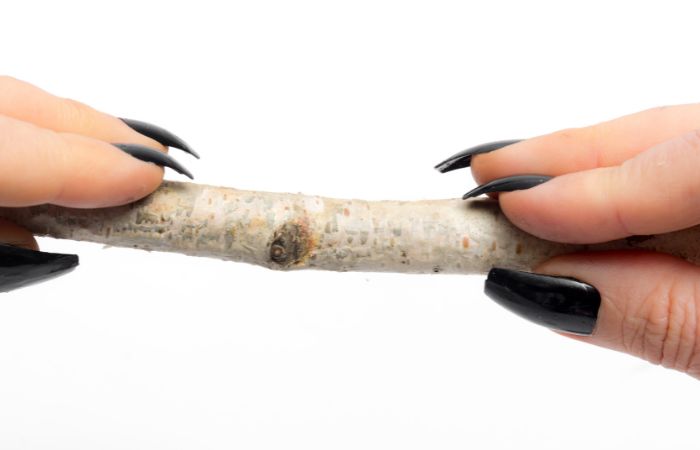
Characteristics of Coffin Nails
Coffin nails are characterized by their long and tapered square shape. The nails start wider at the base and gradually taper down to a flat, squared-off tip. This shape creates a bold and edgy look that has gained popularity in recent years.
Fragility of Coffin Nails
Due to their length and squared-off tip, coffin nails are more fragile and susceptible to breakage. The flat surface of the tip can catch on objects, increasing the risk of chips, cracks, or even complete breakage. It’s important to handle and care for coffin nails with caution to maintain their integrity.
Read This Next:
Importance of Proper Care and Maintenance
Proper care and maintenance are crucial to minimize the fragility of coffin nails and prevent breakage. By adopting a regular care routine, you can strengthen and prolong the lifespan of your coffin nails.
Tips for Strengthening Coffin Nails
Here are some tips to strengthen coffin nails and reduce the risk of breakage:
- Optimal Length: Consider keeping your coffin nails at a length that is both fashionable and manageable for your lifestyle. Longer coffin nails are more prone to breakage.
- Protective Measures: Be mindful of how you use your hands to avoid placing excessive pressure on the flat, squared-off tips of coffin nails. Protect your nails by wearing gloves during activities that may expose them to harsh chemicals or potential impacts.
- Regular Maintenance: Trim and file your coffin nails regularly to maintain their shape and prevent them from becoming too long or susceptible to breakage.
- Nail Strengtheners: Utilize nail strengtheners or treatments specifically formulated to enhance the strength and resilience of coffin nails.
- Moisturize and Nourish: Keep your nails and cuticles hydrated by regularly applying moisturizing nail oils or creams to prevent dryness and brittleness.
- Consider Alternatives: If you desire the look of coffin nails but are concerned about their fragility, consider alternatives such as gel extensions or acrylic overlays. These options can provide additional strength and durability.
Stiletto Nails
Stiletto nails are a bold and fierce nail shape that draws inspiration from the sharp, pointed heels of stiletto shoes. This dramatic and eye-catching shape features long, slender nails with a distinct pointed tip. While stiletto nails make a statement, it’s important to note that they are fragile and prone to breakage. Let’s explore the characteristics of stiletto nails, their fragility, the challenges of maintenance, and alternatives for those who desire the look without the inherent fragility.

Characteristics of Stiletto Nails
Stiletto nails are known for their long, slender shape that tapers to a sharp point. This shape exudes glamour, elegance, and a touch of edge. Stiletto nails offer a striking and unique look that captures attention.
Fragility of Stiletto Nails
Due to their extreme length and pointed tip, stiletto nails are inherently fragile and more prone to breakage. The elongated shape puts stress on the nail structure, making them vulnerable to cracks, chips, or even complete breakage. The pointed tip is particularly delicate and can catch on objects easily.
Challenges of Maintenance
Maintaining stiletto nails can be challenging due to their fragility and vulnerability. The elongated length and pointed tip require extra care and caution to prevent breakage and maintain their shape. Regular maintenance is essential to ensure the longevity of stiletto nails.
Tips for Maintenance and Breakage Prevention
To care for stiletto nails and minimize breakage risk, consider the following tips:
- Moderate Length: Consider keeping your stiletto nails at a length that balances style and practicality for your daily activities. Extremely long nails are more prone to breakage.
- Protective Measures: Be cautious when using your hands to avoid placing excessive pressure on the pointed tips of stiletto nails. Wearing gloves during activities that may expose the nails to potential impacts or chemicals is recommended.
- Regular Maintenance: Trim and file your stiletto nails regularly to maintain their shape and prevent them from becoming too long or susceptible to breakage. Be mindful of filing the pointed tip to avoid weakening it.
- Nail Strengtheners: Utilize nail strengtheners or treatments designed to enhance the strength and resilience of stiletto nails.
- Gentle Handling: Avoid using your stiletto nails as tools or for activities that may put excessive strain on them. Treat them with care and avoid any actions that could cause accidental breakage.
Alternatives and Variations
If you desire the elongated and pointed look of stiletto nails without the inherent fragility, consider alternatives or variations that offer a similar aesthetic. Options like almond-shaped or tapered square nails can provide a compromise, combining style and strength.
Conclusion
Taking care of your nails goes beyond choosing the right nail polish color or design. Understanding the impact of nail shape on breakage can help you make informed choices and adopt practices that promote stronger, healthier nails.
Remember, no matter the shape of your nails, proper nail care and maintenance are essential. Regularly moisturizing your cuticles, avoiding harsh chemicals, and keeping your nails trimmed and filed can contribute to stronger, less brittle nails. Additionally, following the recommended techniques for shaping and maintaining your chosen nail shape can help prevent breakage and prolong the lifespan of your manicure.


